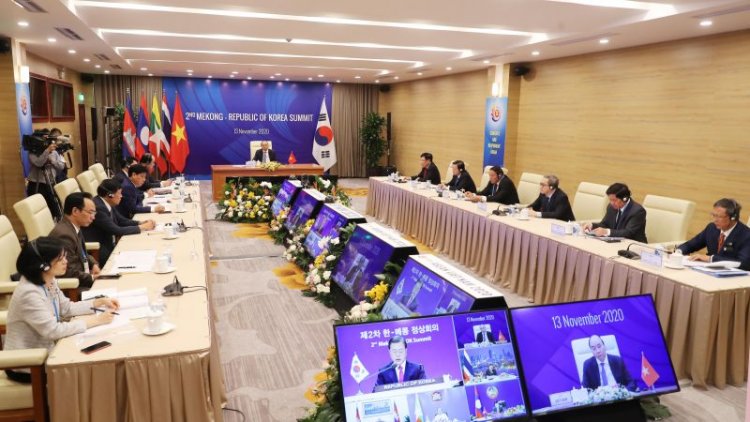Asia Pacific Closes In World’s Biggest Trade Deals

Fifteen Asia-Pacific economies are set to conclude talks on Sunday and sign what could become the world’s largest free trade agreement, covering nearly a third of the global population and about 30% of its global gross domestic product.
The Regional Comprehensive Economic Partnership (RCEP), which could be approved at the end of a four-day ASEAN summit in Hanoi, will progressively lower tariffs and aims to counter protectionism, boost investment and allow freer movement of goods within the region.
A U.S.-China trade war and U.S. President Donald Trump’s “America First” retreat from predecessor Barack Obama’s “pivot” towards Asia has given impetus to complete RCEP, which is widely seen as Beijing’s chance to set the regional trade agenda in Washington’s absence.
The U.S. election win by Democrat Joe Biden, however, could challenge that, with the former vice president signalling a return to stronger U.S. multilateralism.
RCEP includes China, Japan, South Korea, Australia, New Zealand and the 10 members of the Association of South East Asian Nations (ASEAN) - Brunei, Vietnam, Laos, Cambodia, Thailand, Myanmar, Malaysia, Singapore, Indonesia and the Philippines.
India was involved in earlier discussions but opted out last year.
One of the deal’s biggest draws is that its members already have various bilateral or multilateral agreements in place, so RCEP builds on those foundations.
It will allow for one set of rules of origin to qualify for tariffs reduction with other RCEP members. A common set of regulations mean less procedures and easier movement of goods.
This encourages multinational firms to invest more in the region, including building supply chains and distribution hubs.
The idea of RCEP was hatched in 2012 and was seen as a way for China, the region’s biggest importer and exporter, to counter growing U.S. influence in the Asia-Pacific under Obama.
Negotiations for a U.S.-led “mega-regional accord” then known as the Trans-Pacific Partnership (TPP) - Obama’s signature trade deal - were making strong progress and China was not among its 12 members.
Momentum behind RCEP grew when Trump withdrew the United States from the TPP in 2017, taking away its main architect and two-thirds of the bloc’s combined $27 trillion GDP. It was renamed the Comprehensive and Progressive Agreement for Trans-Pacific Partnership (CPTPP) and it includes seven RCEP members.
As the key source of imports and main export destination for most RCEP members, China stands to benefit and is well positioned to shape the trade rules and expand its influence in the Asia-Pacific, which Obama had openly sought to prevent.
RCEP focuses heavily on slashing tariffs and increasing market access but it does not harmonise to the same extent as CPTPP and is seen as less comprehensive.















































